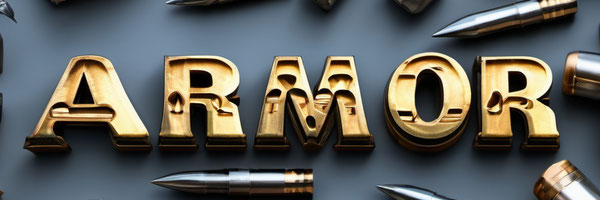Comfortable Armour
Grade 7
Presentation
No video provided
Problem
The armour First Responders and Soldiers that serve their country in war wear is super uncomfortable and very heavy, the avarage weight of an armoured suit that a soldier wears is around is 7 - 10kg. We are going to make an informative research opinion on a different way the vest can be made to ensure better comfort and much lighter.
Method
Our concept consists of Ballistic Rubber, Sand, Marine Vinyl, Polyethylene, Pyrex, Carbon Fiber and Stitches. We will put the Marine Vinyl and layer it with carbon fiber on top. Then we will put the sand, rubber, and polyethelene on it. Finally we will put the pyrex and ballistic rubber. We will cover it with the carbon fiber and Marine Vinyl to finish the sides off. Then we will stitch it, and put it together. We decided to do this after watching many soldiers serving their country in war collapse from the weight of the suit and the heat from the sun. We felt apologetic and decided to design it one less in the situation of suffering and more in the situation of comfort.
Research
> Ballistic Rubber
- This type of rubber is the inner part of tyres and is the strongest layer.
It is also used as the backboard in the targets in gun ranges.
- This is one of the strongest types of rubber there is known to mankind.
> Sand
- This is one of the most abundant solid materials on Earth.
- This is also a very strong material when packed together.
- It is also a very important material because it weighs the suit more causing better stability.
> Marine Vinyl
- Marine vinyl is durable, weatherproof, and is an easy to clean fabric.
- It is a strong and has very little tensile strength so it is very hard to tug on the fabric
> Polyethlene
- Polyethylene is a very tough, light, flexible synthetic resin made by polymerizing Ethylene.
- Mostly used for plastic bags, food containers, and other packaging uses.
> Pyrex
- Pyrex is a type of clear, low-thermal-expansion borosilicate glass.
- Although Pyrex isn't bulletproof it is shock resistant and very strong.
> Carbon Fiber
- Carbon Fiber is a material consisting of thin, strong crystalline filaments of carbon.
- It is used to strengthening materials, especially in resins and ceramics.
- It is also used in many racecars as, it is stronger than metal and is light weight.
> Stiches
- These stiches are going to be made of a very little tensile and torque strength.
- We will stich our armor using the Armor Stitch Pattern which is a simple yet unique, knitting
pattern, it only involves basic knits and purls to create an airy and stretchy, textured
fabric.
> About Armor
Definition: A protective clothing with the ability to deflect or absorb the impact of projectiles
or other weapons that may be used against its wearer. Until modern times, armour worn by
combatants in warfare was laboriously fashioned and frequently elaborately wrought, reflecting
the personal importance placed by the vulnerable soldier on its protection and also frequently
the social importance of its wearer within the group. With the rise of terrorism and the use
of powerful personal weapons by criminals, armour is now frequently worn by police, by private
nonmilitary security forces, and even by noncombatants who might be targets of attack.
Effect Of
Modern Tech: Modern technology has brought about the development of lighter protective
materials that are fashioned into a variety of apparel suited to the hazards of
modern warfare.
History: In the 13th–15th century, plates of armour were first experimented in Italy and were made of
iron. Iron armour could be heat treated or case hardened to give a surface of harder steel.
Plate armour became cheaper than chainmail armor by the 15th century as it required much less
labour and labour had become much more expensive after the Black Death, though it did require
larger furnaces to produce larger blooms.
Data
Conclusion
By stiching up all our components into our finished project, we will have a comparatively comfortable and not as heavy as a bulletproof vest which might help soldiers suffer less. All our materials are based off different materials that are of the highest quality and have the best protection. We have made sure each material is long lasting and can be used multiple times
Citations
Acknowledgement
Mr. Aneesh Kunhambu
Mrs. Ramya Vaniya
Mrs. Reena Budhrani
Mr. Chiran Shamdasani
Mrs. Katheryn Antulov
Mrs. Lindsay Booth
Mr. Lyndon Neustaeter
Mr. Quentin Krawchuk
Mr. Shawn Garden
Ipsit Singh

